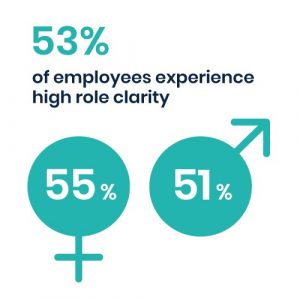Within this article I want to draw upon the book Switch: How to change when change is hard to illustrate the key role that role clarity plays in change, and how successful change needs more than willingness.
Are your employees resisting change?
Change
Change is an inevitable part of working life. Organizations and their employees are constantly changing as they seek to learn, evolve and stay one step ahead of the competition. Although change is inevitable, the way in which individuals and organizations adapt and apply change is one of the most important factors within organizations today.
The failure to change is, in my opinion, too often blamed on a lack of willingness amongst employees. Willingness to change is, of course an indicator of how successful change will be, but being willing to change, and successfully changing, are two different things. Our experience at Effectory International has taught us that within organizations, a lack of role clarity can be one of the biggest obstacles to successful change.
A major pitfall
Many months ago a colleague of mine passed on the details of a book by Dan and Chip Heath entitled: Switch: How to change when change is hard. (If you’re interested in change, whether it is in your organization, or personal life, I would really recommend this to you!). After reading the book and discussing the topic with my colleagues, I was constantly reminded of what, I believe to be, is a major pitfall of successful changes in organizations: what looks like resistance from employees when organizations change is often a lack of clarity about what is expected of employees.
Global Employee Engagement Index™
Discover the Global Employee Engagement Index™ 2025 for key insights on driving employee engagement, improving performance, and enhancing team dynamics.
DownloadIs it really resistance, or lack of role clarity?
Within the book the authors provide a great example of when resistance to change is actually a lack of role clarity.
Two professors from the University of West Virginia, U.S.A, began a study aimed at getting people to eat healthier. After some discussion they began looking at how to get people to think about eating healthier before they went shopping for groceries. They explored what happened if you gave people one message: “You need to eat healthier”
Although this message was clearly received and understood, most people who received it were left with more questions:
- How do I eat healthier?
- Which products should I eat, and which ones should I avoid?
- Should I change how I eat at breakfast, lunch and dinner?”
In the above scenario we can clearly see that the barrier to change was a lack of understanding when it comes to what behaviors will actually lead to a successful change. The people asked were willing to change (and eat healthier), but they lacked the knowledge to change their behavior. In essence, people lacked the clarity they needed for the role (healthier eating) that they wanted to adopt.
HR Analytics: Role Clarity infographic & fact sheet
Get data-driven insights about role clarity in the workplace by downloading this infographic and fact sheet.
DownloadWhat specific behavior do you want to change?
It’s important then, that when you want to induce change that you not only communicate what you want to change, but how you want to change it.
If we go back to the above study by the professors in West Virginia, we can see they had a problem. In short, the professors knew the message they wanted to convey and what they wanted to change; people just didn’t know how to do it.
After conducting further research, the professors were able to identify a specific behavior that they could change. They found their simple solution in milk. The vast majority of people in the United States drink whole milk and their research showed that whole milk is responsible for a large percentage of saturated fat in the average diet of Americans. If they could therefore convince people to buy low fat milk at the supermarket, people’s diet would quickly become a whole lot healthier.
With this understanding, inducing change became much easier. Their question changed from: “How can we make people eat healthier?” to “How can we get people to buy milk with less fat when they’re in the supermarket doing their grocery shopping?” Such a question is easier to understand, more feasible, and more importantly, it becomes easier to convey what people need to do in order for change to occur.
The importance of role clarity
Our experience at Effectory International has shown us that a similar scenario the above is often present within organizations. Employees are often simply unsure of what they must do to help the intended change, and what their role is. There’s always a lurking risk that failed change will get blamed on employees’ lack of willingness. It pays for organizations to look closely when a change hasn’t produced the desired results, and to look closely at role clarity. Do employees clearly understand their role? Do they know how they can successfully contribute to the changes?
As with the “eat healthy” scenario, if people don’t know their role and what they need to do to achieve the intended change, it’s highly unlikely they’ll be able to do it.
Book a free demo. See our solutions in action.
Effectory is Europe's Leading provider of Employee Listening Solutions. Schedule a product demo and discover how to enhance your employees' engagement.
Demo request

